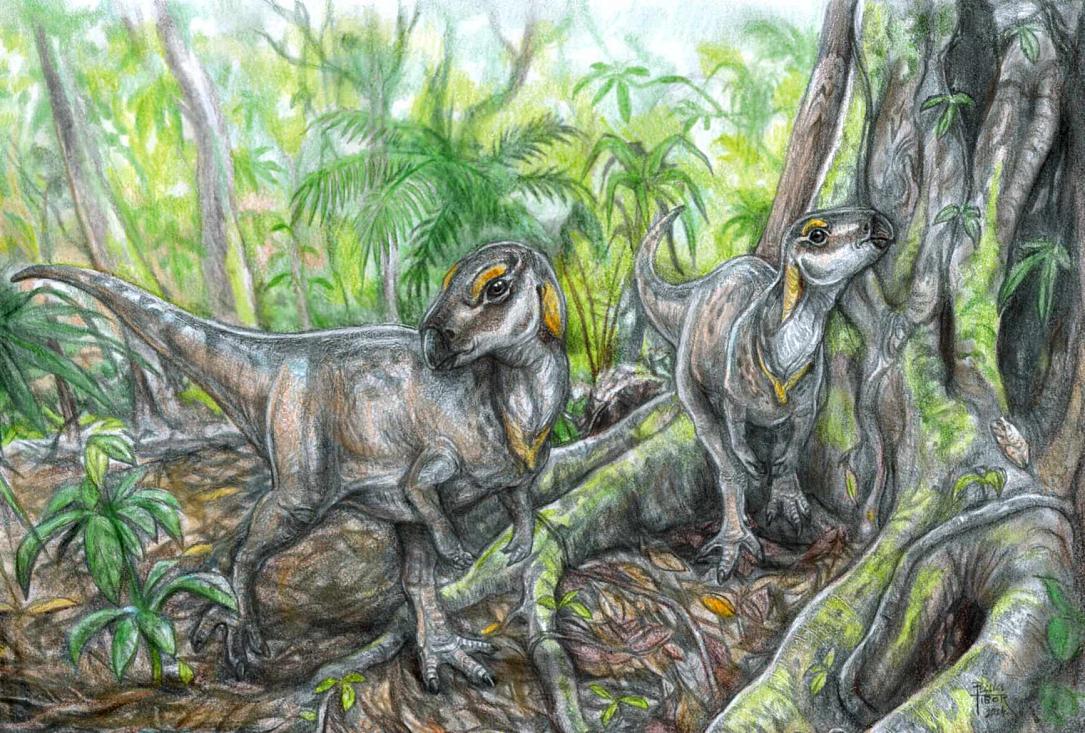Unique dinosaur fossils uncovered in Romania’s UNESCO Geopark Țara Hațegului



Fossils of dinosaurs belonging to the Rhabdodontidae family, unique in the world and approximately 70 million years old, have been discovered within the territory of the UNESCO International Geopark Țara Hațegului, managed by the University of Bucharest.
The discovery was made near the locality of Vălioara in Hunedoara County, western Romania, as a result of research conducted in recent years by an international team of researchers from the Faculty of Geology and Geophysics at the University of Bucharest and the Department of Paleontology at Eötvös Loránd University in Budapest (ELTE – Eötvös Loránd University).
The study of this rich fossil material is ongoing as part of a multi-year collaboration agreement between the two universities, and the initial results of these research efforts were published in December 2023 in the specialized journal "Cretaceous Research," confirming the discovery within the scientific community.
The first indications of fossil sites in the area were identified as early as 2019, and subsequent research has revealed the remains of rich vertebrate assemblages that lived here towards the end of the Cretaceous period. The most numerous dinosaur fossils identified belong to a small, bipedal herbivorous species, measuring between 2 to 6 meters in length, part of the Rhabdodontidae group. The discovered bones are in a very well-preserved state, without having been excessively broken or damaged despite their age, and they include parts of the skeleton that have never been identified in Rhabdodontids prior to this study.
"Although close relatives of these dinosaurs have been found on other continents, such as North America and even Australia, the Rhabdodontidae family itself was strictly endemic to the European island archipelago between 85 to 66 million years ago. This group of relatively small herbivorous dinosaurs, ranging from 2 to 6 meters in length, currently includes 9 different species, of which 3 are known only from the Transylvania region in Romania. Furthermore, many of these species have only been identified in recent decades, mainly due to the expansion of systematic research in the Hațeg Basin and other parts of Europe. The partial skeletons we discovered and studied suggest that this group of dinosaurs was likely even more diversified than currently believed, with new species that could be described in the future," stated the lead author of the study and Ph.D. student at Eötvös Loránd University in Budapest, Dr. János Magyar, cited by in the press release.
The fossils discovered probably come from a small number of individuals, allowing for a faithful reconstruction of the animal’s morphology.
"Considering the different living environments indicated by the rocks at Vălioara, as well as their slightly older age, it is likely that our discoveries reveal a new, undocumented fauna association not previously studied. However, to establish this, research needs to be continued and even deepened," said the leader of the research team, Dr. Gábor Botfalvai from ELTE University.
The Hațeg Basin has been renowned for over a century for its discoveries of dwarf dinosaur fossils from the Upper Cretaceous rocks. The first dinosaur remains from Hațeg were studied by the eccentric paleontologist Baron Franz Nopcsa, who described the first Rhabdodontid remains from here 120 years ago.
Late Cretaceous dinosaur fossils in Europe are much rarer than those from deposits of the same age in North America or Asia, and they are usually more incomplete, fragmented, and isolated. As a result, there is no complete Rhabdodontid skeleton known, making the systematic study of this group very challenging.
The study of the recently discovered fossil vertebrates in the Vălioara area will help create a faithful picture of the composition and ecology of this community of dwarf dinosaurs that lived shortly before the complete extinction of dinosaurs, approximately 66 million years ago.
(Photo source: Geoparcul International UNESCO Tara Hategului on Facebook)